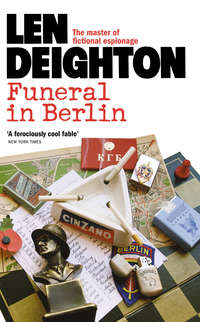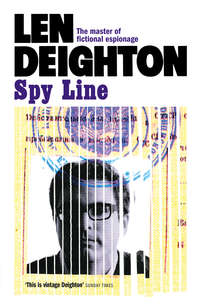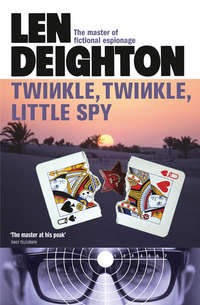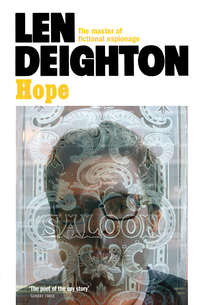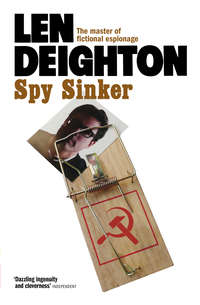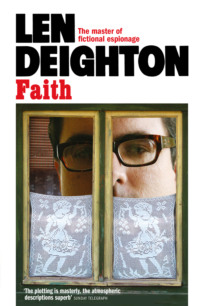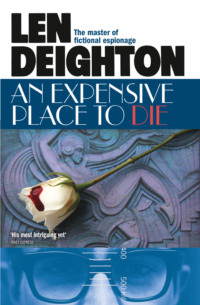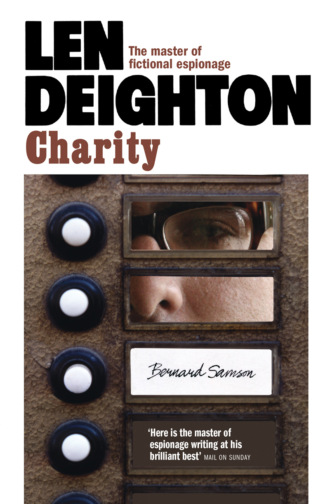
Полная версия
Charity

Cover designer’s note
Some years ago, on visiting the Vienna office of famed Nazi hunter Simon Wiesenthal, I was intrigued by the assortment of names on the building’s bell-push directory. Each button would lead to a separate encounter, a different life story. My photograph of this now serves as a further ominous device for this trilogy.
Readers will note that Bernard’s name appears in the third panel; is Bernard the “third man” in the story, an unreliable narrator who is more implicated in the shady doings and subterfuge than he has let on? Perhaps the third position equates to the third part of the third trilogy; after all, at crux of the whole series stands Bernard. Or perhaps it best suited the design. I shall leave it to you to decide.
Inspiration comes from the most unexpected places. This time it was from listening to a line from the lyrics of “These Foolish Things”, written Eric Maschwitz, a former colleague from my days in television (and no stranger to spy-craft himself): “A cigarette that bears a lipstick’s traces…” This brought to mind the idea of a lipstick-tipped East German cigarette overhanging an ashtray containing a cigarette lighter displaying the ever-present KGB badge.
At the heart of every one of the nine books in this triple trilogy is Bernard Samson, so I wanted to come up with a neat way of visually linking them all. When the reader has collected all nine books and displays them together in sequential order, the books’ spines will spell out Samson’s name in the form of a blackmail note made up of airline baggage tags. The tags were drawn from my personal collection, and perhaps Bernard’s too, and are colourful testimony to thousands of air miles spent travelling the world.
Arnold Schwartzman OBE RDI
Len Deighton
Charity

Copyright
This novel is entirely a work of fiction. The names, characters and incidents portrayed in it are the work of the author’s imagination. Any resemblance to actual persons, living or dead, events or localities is entirely coincidental.
Published by HarperCollinsPublishers Ltd
1 London Bridge Street
London SE1 9GF
www.harpercollins.co.uk
First published in Great Britain by HarperCollinsPublishers 1996
CHARITY. Copyright © Len Deighton 1996.
Introduction copyright © Pluriform Publishing Company BV 2011
Cover designer’s note © Arnold Schwartzman 2011
Len Deighton asserts the moral right to be identified as the author of this work
A catalogue record for this book is available from the British Library
All rights reserved under International and Pan-American Copyright Conventions. By payment of the required fees, you have been granted the nonexclusive, nontransferable right to access and read the text of this ebook on-screen. No part of this text may be reproduced, transmitted, downloaded, decompiled, reverse-engineered, or stored in or introduced into any information storage and retrieval system, in any form or by any means, whether electronic or mechanical, now known or hereinafter invented, without the express written permission of HarperCollins ebooks
HarperCollinsPublishers has made every reasonable effort to ensure that any picture content and written content in this ebook has been included or removed in accordance with the contractual and technological constraints in operation at the time of publication
Source ISBN: 9780007395767
Ebook Edition © JUNE 2011 ISBN: 9780007395804
Version: 2018-09-14
Contents
Cover designer’s note
Title Page
Copyright
Introduction
1
A bloated vampire moon drained all life and colour from…
2
‘That bloody man Kohl,’ said Frank Harrington, speaking with uncustomary…
3
When someone asks you to make an objective decision that…
4
‘Now that Bernard has finally joined us,’ proclaimed Dicky Cruyer…
5
I resented being sent to London Debriefing Centre to squeeze…
6
‘Who is it? Bernard? Good! Put your skates on and…
7
Cindy Prettyman had grown older; we all had. The amusing,…
8
Tegel, West Berlin’s third airport, was built in a hurry.
9
It was a strange place to find the grievously sick…
10
The best way to test Prettyman’s story was to go…
11
Even before the First World War, the joke about ‘count…
12
‘This is not going to become an inquest,’ said Bret,…
Keep Reading
About the Author
Other Books by Len Deighton
About the Publisher
Introduction
If you are obsessed, as I admit to being, it is not always easy to infect others with your devotion. My whole family has proved immune to my feelings about airships, Zeppelinpost, vintage fountain pens and the history of aero engines. So to introduce Charity, the final volume of the Bernard Samson series, I would like to convey to you the reasons behind my obsession with Berlin. I won’t get the same opportunity again, so here is my eye-view of Berlin’s extraordinary past.
My response to Germany and Germans is not that of a casual visitor. In Berlin the battered remains of the fabulous Adlon became my home for some time. Together with my family I lived in Germany and my children attended schools there. Following the extraordinary linguistic talent of my wife, they mastered the German language. Such consummate skills would have been useful to me when I lived in communist East Germany and learned something of the social adroitness required in a country where careless talk can bring infinite suffering. We all saw Germans at their best and at their worst. And the same amazing contrast is to be seen in German history. I do not overlook the millions who died at the orders of the Moscow communists when I say of Germany: how can a nation go from the highest of high achievements and then to the murderous barbarism of the Nazi period, and then produce the repressive inhumanity of the communist regime of which I write in the Bernard Samson stories? I don’t know the answer.
The year 1913 marked the highest time of Germany’s success. On January 27th Emperor Wilhelm II conveniently celebrated both the centenary of the Battle of Leipzig (at which Germany had played a major part in defeating Napoleon Bonaparte) and his 54th birthday. During his 25 years on the throne Germany had undergone an astonishing change. It now had the best railways in the world. It surpassed Britain in iron and steel manufacture and was not far behind Britain in merchant shipping. In applied science, such as chemistry and electricity, Germany led the world. It is true that sophisticated visitors from the glamour of Paris or the wealth of London laughed at Berliners and called them awkward country bumpkins, but Berlin’s population had far more than doubled since Wilhelm II inherited the throne. Manpower, money and growing coal production was expanding the economy, and precision engineering brought wealth and gave the Emperor a formidable army and navy. Germany was fast becoming a superpower to rival Britain. Its lead in aviation was to be seen at the Vienna Air Week in June 1914 when German aircraft won distance, duration and altitude records by large margins. And the Mercedes six-cylinder, water-cooled engine format set the pattern for many years to come.
Kaiser Wilhelm II was a dictator in all but name. Wilhelmine Germany was prosperous but its repression of political discussion and the discouragement of any intellectual exchange ensured that only shallow emotional ideas prevailed in art and literature. Compared to other European cities – such as Vienna and Paris – Berlin was a cultural backwater. Belligerent political misjudgments by Kaiser Wilhelm led to a bloody war on two fronts and to the chaos of Germany’s defeat in 1918. The Kaiser fled to Holland. Germany – now a precarious Republic – saw a series of violent revolutions and counter-revolutions. As the turmoil subsided there was a loosening of cultural restrictions. Extremes of politics, writing, painting, theatre, dance and fashion exploited sensuality. What was at first extreme soon became the general fashion. This shift is often labelled ‘Expressionism’.
Berlin has always been a military city where soldiers were respected and Prussian officers enjoyed high social prestige. At one time, everyone passing either way through the city gates paid a toll called the Akzise, which went directly to the army. Berlin never had the international financial power that London enjoyed; heavy industry and electrical plants dominated it. And it has always been a city of foreigners drawing the talented, the ambitious and the fugitives from the Eastern hinterland. A census in 1910 calculated that only forty per cent of Berliners were born there. Many of the foreigners gave Berlin its distinction as a city of art and experimentation but Germans dominated the theatre. Bertolt Brecht’s The Threepenny Opera with Kurt Weill’s haunting music and Lotte Lenya’s ‘Pirate Jenny’ made the little ‘Theatre on the Schiffbauerdamm’ world famous. Max Reinhardt created unsurpassed drama. So did the man who was, to my mind, the greatest of all: Erwin Piscator, who created electrifying experimental plays. Josef von Sternberg, one of the period’s most famous film directors, was rumoured to have arrived in Berlin from London as a penniless and undistinguished film editor named Joe Stern, but Berlin provided its own magic. Von or no von, berg or no berg, his film The Blue Angel started Marlene Dietrich on the road to Hollywood and riches. Film directors such as Fritz Lang and GW Pabst were ahead of Hollywood in most respects.
The extraordinary culture of Berlin in the first three decades of the twentieth century doesn’t end there. The modern architecture of men such as Walter Gropius and Erich Mendelsohn startled their contemporaries, and their clients too. As for photojournalism: it was invented in Berlin. Erich Salomon used an Ermanox, a tiny camera with huge 85mm f/1.8 lens to shoot verboten photos in ‘existing light’. He used this facility to get scoops on private political meetings and murder trials where light was low and flash bulbs would have attracted attention to his illicit activities. Salomon’s photos were sensational and photo-reportage became a profitable profession as illustrated periodicals were created to exploit photographic stories. Felix Mann and Alfred Eisenstaedt were among the masters of this new pictorial storytelling. The unique ferocity of Berlin’s creativity was fanned by the small numbers of artists. The Romanisches Café, sited alongside the Memorial Church, was a meeting place where ideas, insults, arguments and blows were exchanged. Here, politics met art, and intellectuals met actors. Zeppelins cruised overhead and just down the street, at the Kaiser Wilhelm Institute for Physics, Albert Einstein was preparing to turn the world inside out.
The coming to power of Hitler and his Nazi Party in 1933 brought a new and twisted version of the strict Wilhelmine dictates and abruptly ended Berlin’s free-wheeling culture. The Nazis despised art and considered drama, films and journalism of any sort to be potential and dangerous enemies. Media were placed under the direct control of Josef Goebbels, the propaganda minister. Many creative people fled, and those who didn’t were apt to have their lives abruptly ended in the gas chambers of an extermination camp. Erich Salomon died in Auschwitz. Some of the star actors and actresses escaped to find new careers in New York, Hollywood and London. Photo magazines such as Life in America and Picture Post in Britain benefited from this German exodus.
The centre of Berlin is indisputably the Brandenburg Gate. It has always been more important than any of the other contenders, including the Royal Palace. Yet it was only by chance (in a wartime decision by Allied bureaucrats in London) that in 1945 the Gate became the barrier between the two postwar worlds. Surmounting the arch there is the ‘quadriga’ Viktoria, the goddess of victory, in a chariot drawn by four horses. This great copper icon was stolen by Napoleon, subsequently recovered after Bonaparte’s defeat (by combined German and British armies) only to be destroyed in a World War Two bombing raid. The joy of all Berliners when the moulds were discovered in a Berlin cellar, and the quadriga re-cast and returned to the arch, can be imagined. But Viktoria now looked down upon the sector of Berlin where communists, backed by their Russian masters, inflicted upon the inhabitants of the East Germany the rule of the so-called German Democratic Republic.
Berlin is like an ever-present character in all my Bernard Samson books. It hovers over the action like a storm cloud even when the action moves to a different locale. But Berlin has no speaking part. It is the action and inter-action that must always dominate stories of the sort that I write. Berlin is the backdrop but the people who strut and posture on the stage together create a mood of drama, farce, horror or knockabout comedy that must be maintained throughout all the stories. When I wrote Winter, a story of Berlin in the first half of the twentieth century, and the prelude to the Bernard Samson stories, the ghosts danced in my head.
The critics of Britain and the USA (I can’t effectively read the others) have been generous to me and I offer them a belated thank you for the confidence that an experienced critic can provide to a working author. But I have always been a little puzzled by the way the critics have categorized the stories. Now, let me say immediately, that few, if any, writers can evaluate their work with any semblance of accuracy. I suspect that Proust intended to write a family saga and Tolstoy thought War and Peace was a travel guide, but surely the Bernard Samson stories are comedy thrillers – boardroom dramas perhaps – about a man in love with two women. Bernard’s emotional dilemma and the effect it has on both Fiona and Gloria was the driving force behind writing this continuing drama. But neither the love nor the comedy has, over the years, provoked the sort of comment I expected.
When writing just one book, a handful of notes and a good memory is all that is required to monitor your characters. But when planning ten books one becomes a personnel manager. Right from Berlin Game, the first book in the first trilogy, I created a wall chart plus a file index for the major roles. But for changes over a long period of time character notes would not be enough. So for the major characters in the Bernard Samson series I used real people as my reference. I don’t mean that each is an exact portrait of someone I know; each is an assembly of several people I know, or ones I met a few times. The Germans had to be German in thought and action; their clothes and mannerisms, their shape and syntax are rooted in observations. But in appearance, both the avuncular Frank Harrington and formal Bret Rensselaer are slightly aged versions of old friends. Werner is a fondly recalled business partner of long-ago and Lisl Hennig’s hurried judgment and rather oblique reasoning is sometimes that of my dear Irish mother. As for George Kosinski, his characterization was simple. At grammar school, at art school and again at college I had many cherished Polish friends. George was the unforgettable father of one of them. The origin of that modest charmer Dicky Cruyer and his arriviste nature is best left unaccounted for. Fiona and Gloria are two contrasting facets of my wife, Ysabele. But these are also modified and changed by the addition of other observations. Along with passing time, plot development brings stresses and strains and changes in character so that each person soon became quite different to the original description. Everything changes as writing continues, as Napoleon is said to have declared about battle. I didn’t mean to fall in love with the character of Gloria. I fought against it every step of the way. I gave her plenty of faults and failings but it was no use, she came through every test with a radiant glow. I loved Fiona too; she has the sophistication, gravitas and intellect that Bernard respects so much. But Gloria wears my wife’s clothes – that fur hat and brown suede overcoat from Paris – and flaunts them with youthful abandon. Who can resist her? And yet these were not my characterizations. Like everyone and everything in the stories, each was seen through the eyes of Bernard Samson, whose sceptical bite is the essence of the whole series.
It wasn’t just the characters; I also kept a file index for the places in the story. As with the people, photographs and my own sketches supplemented the on-going material. The Hennig Hotel goes through several changes in the Samson years and its origin, as family residence in the early years of the 20th century, was described in Winter. The furniture and furnishings of the Berlin home and office of Frank Harrington had pages of notes devoted to them. So did Dicky Cruyer’s home, changing frequently to the dictates of fashion, and more records were kept describing the offices and safe houses used by the SIS in London.
One reader told me that the Bernard Samson books were a social chronicle of the final years of the communist empire seen from London, Berlin and Warsaw. I had never thought of them in that way and that certainly was never my primary intention. Only here and there have I touched upon the historical background. I didn’t want the books to become a political record so did not refer to such events as the travels and speeches of people such as President Reagan, Pope John Paul II and Mikhail Gorbachev, all of whom played a vital part in the eventual fall of Russia’s communist empire, and thus in the lives of my characters.
But history cannot be denied and finally the rumour mills proved right. The daily sequence of hints and tips we all received constantly, from both sides, came to fruition step by step. With no warning from the expensive intelligence organizations of the West, the Wall went down as it had gone up; in a muddled scramble of incompetence and confusion. But with that fine sense of proportion with which all apparatchiks are equipped, the Stasi, the Grepo, the East German politicians and all those who had manned the murder machines of the DDR got their pensions guaranteed in Western marks. In England and America people winked at me and said I’d forecast the most unexpected development. But few Germans hailed me as a prophet; they had seen what was coming and those who were surprised said I was lucky.
Just as with the collapse of communism in Poland, Germany’s intellectuals and academics who had energetically supported the repressive regime to the very end, were the first to declare themselves the victors in a struggle for freedom and democracy. And because substantial numbers of these people spoke English, the news reporters and historians who flooded in to tell the story of freedom’s triumph gave them the role of heroes. The story of the Church, its valour, sacrifices and triumphs, was belittled by these belligerent secularists.
It was Russia’s leader, Mikhail Gorbachev, (who remained a dedicated communist) who had the last word on the subject; ‘If there is one man responsible for the collapse of communism it is Pope John Paul II.’
Len Deighton, 2011
Конец ознакомительного фрагмента.
Текст предоставлен ООО «ЛитРес».
Прочитайте эту книгу целиком, купив полную легальную версию на ЛитРес.
Безопасно оплатить книгу можно банковской картой Visa, MasterCard, Maestro, со счета мобильного телефона, с платежного терминала, в салоне МТС или Связной, через PayPal, WebMoney, Яндекс.Деньги, QIWI Кошелек, бонусными картами или другим удобным Вам способом.


